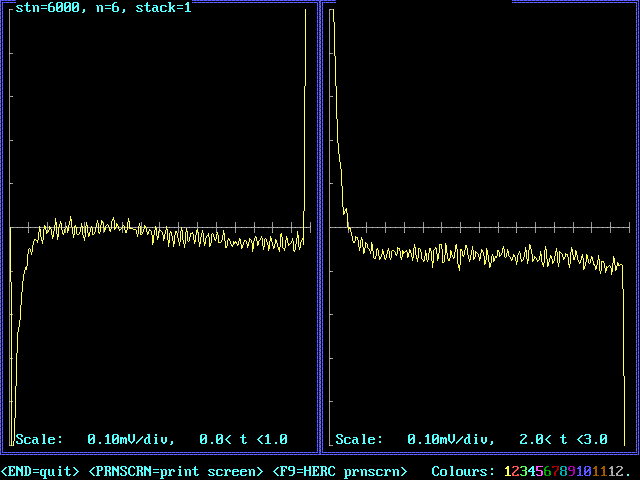Telluric noise on IP decay curves
Seven repeat measurements are acquired within 30 seconds. Only the "off-time" signals are displayed (negative off-time on the left, positive off-time on the right). Data were gathered in Nevada using a "full waveform" IP receiver.
Each subsequent decay curve has a different bias, showing that the telluric noise (with a frequency of roughly 1 Hz) is larger than the IP decay signal. Drift is visible on individual curves, especially the last one (deep red). Also, 60 Hz noise is visible on all signals.
